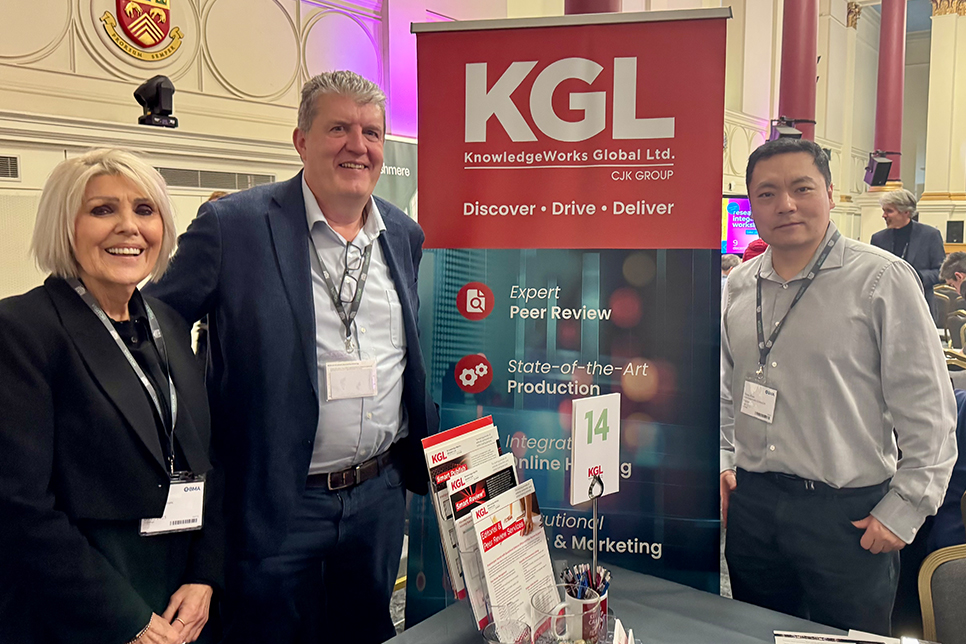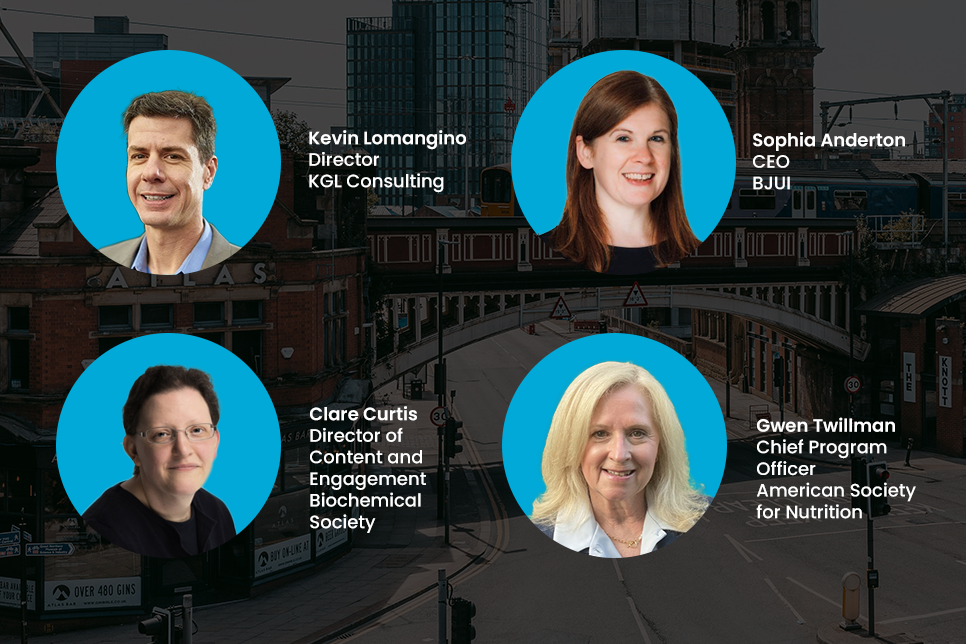By Justin Byrne
Executive Managing Editor, American Academy of Allergy, Asthma & Immunology
LinkedIn: https://www.linkedin.com/in/justin-byrne-b78a087
Take Home Points:
A Pressing Question Leads to More Questions
In 2021, our society, the American Academy of Allergy, Asthma & Immunology (AAAAI) faced a pressing question: Should we launch a Gold OA title? The AAAAI already had two of the most highly cited and widely read print journals in the field of Allergy/Immunology: the Journal of Allergy and Clinical Immunology (JACI), which began publishing in 1929, and JACI: In Practice, our clinically focused journal, which began publication as a bimonthly in 2013.
The Allergy/Immunology specialty, like many specialties, has seen an uptick in research output and funding tied to areas such as biologics for treatment of asthma, food allergy, and skin disorders; as well as advances in personalized medicine, immune dysregulation, and global disease burden due to climate change and social disparities of health. Yet the established journals in the field can only absorb so much of this research. Moreover, the shifting policy landscape in both the U.S. and European Union, (the rise of Plan S, the White House memos on NIH-funded content (see Holdren Memo, 2013 and Nelson Memo, 2022), and other funding-body mandates for immediate, Creative Commons-licensed publication), made our editors and governing board see that we would need to offer a fully compliant, high-quality OA option. Failing to do so meant risking both relevance and revenue to other journals in our specialty that opted to make these maneuvers sooner rather than us.
These concerns germinated for several years until our two journals reached a moment of inflection, after a deluge of submissions during the COVID-19 pandemic in 2020-2021. Was the time ripe for starting a new journal, lest we risk losing valuable content and community engagement to other journals in our field? Answering that question launched a multi-year effort filled with some challenges, much collaboration, and myriad successes, large and small. Based on that experience, I’d like to share what we learned, both the expected, the unanticipated, and some unique challenges, so that others navigating similar terrain in the current OA landscape might benefit.
Realizing the importance of OA content didn’t automatically make it an easy decision to launch a new title. We were faced with pressing questions: Would we cannibalize submissions from our two flagship titles? Would that potentially dilute their field-leading impact factors? Could we attract enough quality content in the critical early years, without having an impact factor or indexing in PubMed (both of which can take at least two years to secure)? Would launching an OA title expose the society to financial risk? These were valid concerns, and addressing them required both data and diplomacy, plus sage advice from our publisher.
The Real Work Begins
We began by conducting a market analysis in collaboration with Elsevier, our publishing partner of many years. Their senior business advisors prepared reports showing the growth in OA titles as well as the expected costs and benefits that starting our own OA journal would be expected to realize We also polled our Board of Directors and Editorial Boards on their input as to how a new OA journal in our society would be viewed by the field. The evidence presented was clear: there were growing cohorts of researchers, especially from Europe, Asia, and NIH-supported labs in the U.S., looking for OA publishing venues to meet their funding mandates, and authors expressed frustration when they couldn’t get their work featuring translational or Phase I studies accepted by JACI and JACI: In Practice. Also, our journals were noticing a growing number of submissions from outside of North America, Western Europe, and Japan, which had constituted the majority of our published work. Equally important, we learned that a few other societies in our specialty had successfully launched OA titles without undermining their flagship journals. These case studies helped shift the conversation from risk to opportunity.
Once our leadership became aligned with the concept, the real work began. Launching the journal required careful input from multiple divisions of the society and the publishing team. These included our member outreach communications teams, publications experts on the Board of Directors, accounting division, and timing the announcements to our upcoming annual meeting. We had to define the new journal’s scope carefully to differentiate it from our existing journals. Allergy/Immunology is a broad field covering many disease states and research topics, so we chose to focus on early-stage research, translational science, case studies, and innovative methodologies. These were areas where new authors were especially active and where OA publishing could help surface emerging talent. Highlighting our desire to have a worldwide base from which to draw submissions, the name chosen for the new journal was JACI: Global.
Attracting submissions was one of our biggest initial concerns. Unlike our two established titles, we didn’t have the benefit of a submission backlog, a large editorial board, or built-in prestige. To address this, we planned a coordinated pre-launch campaign that included announcements at the annual AAAAI scientific congress, ads in our other journals, social media outreach, and direct invitations to high-performing authors whose manuscripts we had previously declined due to space constraints. Offering a fast, author-friendly peer review experience was also central to our strategy. Authors value speed and transparency, and we worked hard to ensure that our editorial workflows delivered both.
Finding reviewers proved more difficult than anticipated. Without an impact factor or indexation in PubMed, we couldn’t rely on the usual incentives. Instead, we turned to our sister journals’ editorial boards for help. We hosted joint editorial meetings and encouraged reviewers to think of the OA journal as part of the same scientific ecosystem. Over time, as submissions grew and reviewer recommendations flowed more easily between journals, this collaborative approach became a strength rather than a workaround. Many of the reviewers for JACI: Global also review for JACI and JACI: In Practice, but we have also built a good corps of new international reviewers who opted to review based on their positive authorship experience with Global.
Then came the technical and policy hurdles. Compliance with indexing requirements from PubMed, Scopus, and Web of Science required meticulous attention to detail. We needed structured metadata, permanent identifiers, full-text XML, digital preservation, and license transparency. Our editorial board needed to be diverse both in terms of geography, gender, and nationality. Our publisher was instrumental in navigating this complex arena, particularly around automated workflows and archiving standards. Even with that, the process still required months of planning and attention to all details before we could apply for indexation, because being rejected could mean a wait of 1-2 years before reapplying.
Financial sustainability was another key question. Transparency around pricing and publication costs was essential, not only to meet the expectations of Plan S but also to maintain trust within our community. Could we offer waivers on the APCs for authors who expressed an inability to pay them? Could members of the AAAAI get discounts on the APCs? In the end, we chose to implement an APC model that kept costs moderate and ensured authors had access to waivers when needed. The APCs were split between short items (Brief Communications and Case Reports) and full-length articles (original research and review articles), to allow an option for authors to submit papers if they did not have the funding for a full-length report. The actual APC levels were suggested by the publisher and negotiated with our leadership to be at a competitive rate that would have a 50% discount for the first 2 years, and a 25% member discount after that initial promotional discount expired.
Growing Pains Lead to Growth
As JACI: Global gained traction, we encountered some of the very tensions we had initially feared. There were concerns from our editorial boards of our two main journals about scope overlap. Some worried that the new journal might become a “dumping ground” for rejected content. We countered this by clearly articulating the editorial focus of the new journal and emphasizing its scientific rigor. Regular communication between editorial teams helped reinforce a sense of shared purpose. Over time, we developed several levels of referral workflows that allowed manuscripts to move smoothly between journals, often with the benefit of existing peer reviews. Our editor-in-chief (EIC) joins regularly scheduled meetings with the two other EICs and I oversee the editorial office staff running the three journals, so communication is seamless and constant. Additionally, our senior publishing executive oversees all three titles, which ensures consistent reporting and advocacy for our needs as we grow.
One of the most satisfying aspects of this journey for me, on both professional and personal levels, has been watching this new journal develop its own identity. Our branding has always emphasized a global worldview focusing on openness, innovation, and inclusivity, both in our authors who present their work, and the readers around the world who can access our content without barriers. Today, JACI: Global has received submissions from over 50 countries and every continent (even Antarctica!) We continue to track key performance indicators such as submission volume, time to decision, acceptance rate, reviewer turnaround, etc., to ensure we were meeting the needs of authors and reviewers. These metrics helped us make the case for early indexing and, eventually, helped secure inclusion in PubMedCentral after 2 years. Just this spring, we learned that we will receive our first impact factor from Clarivate in 2026.
Reflecting on the process now, I offer several pieces of advice to others considering a similar venture. First, start planning well in advance, at least a year ahead of your target launch date. Second, lean heavily on the advice and experience of your publishing partners (they have likely launched OA titles before and can guide you through everything from getting an ISSN (International Standard Serial Number) to licensing language for the author forms). Third, be prepared to communicate constantly with your society, your editors, your authors, and your reviewers, and be ready to advertise your launch among research realms outside of your flagship journals. Transparency, consistency, and a sense of shared mission will go a long way in building credibility and easing any doubts about the decision to start a new journal!
The Ongoing Journey
Launching a new journal is not a one-time event; it’s an ongoing investment. You must be prepared to continually promote the new journal in its early months, solicit high-quality content from engaged authors in the field, make the relationship with the “sibling” journals clear, and be agile and adaptable to frequently changing policies in the OA realm. However, if done thoughtfully, and with a bit of luck, the rewards reaped will be substantial.
In our case, starting our new OA journal didn’t just fill a publication gap, it sparked a broader conversation about what kind of publishing future we want to build. That conversation is ongoing, and I’m grateful to be part of it.
Origin Editorial is now part of KnowledgeWorks Global Ltd., the industry leader in editorial, production, online hosting, and transformative services for every stage of the content lifecycle. We are your source for society services, market analysis, intelligent automation, digital delivery, and more. Email us at info@kwglobal.com.






